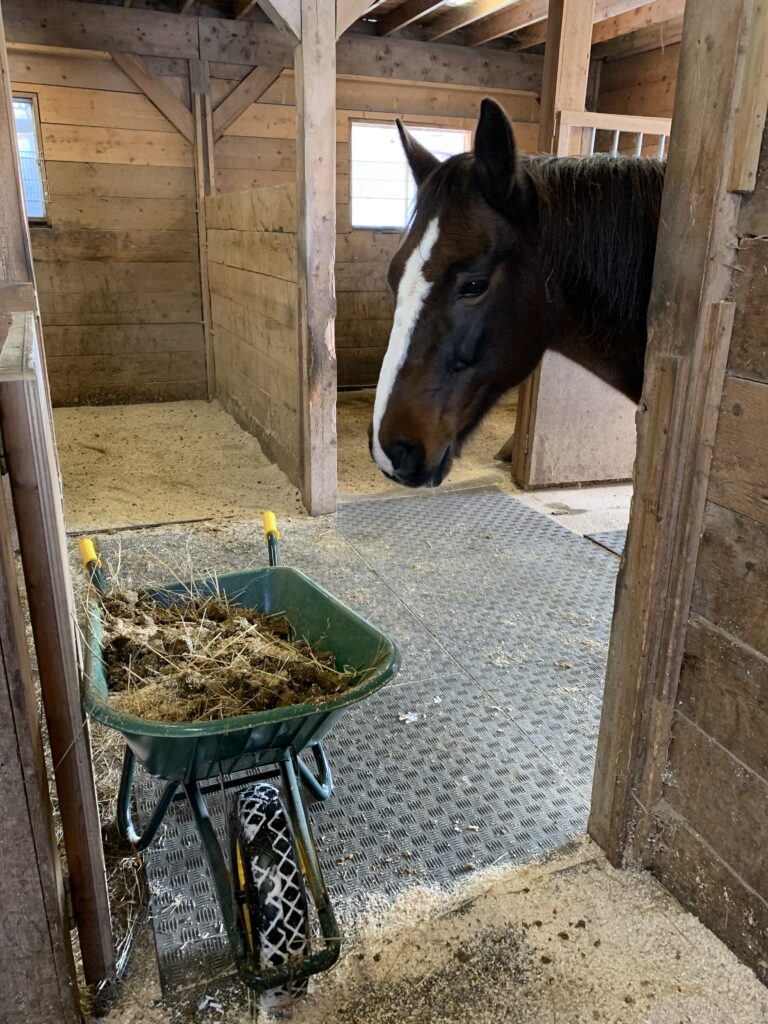Shovelling Manure and the Link With Leadership

As anyone who shovels manure into a wheelbarrow knows, there comes a time when it’s done. Time to quit. It will not take one more shovelful. Yet, sometimes, we persist. We still try to add on that one last scoop. This describes me this morning as I cleaned stalls long after the boys frolicked off into the sun. The parallel with the behaviours consistent with the predator role described in Linda Kohanovo’s book, The Five Roles of the Master Herder, was not lost on me.
The book is a guide to socially intelligent leadership. In it, Linda describes the five roles socially and emotionally competent leaders must master to be effective. I’ve studied and worked with numerous leadership models and frameworks. This one offers something different. The model grew from extensive research Linda did for another of her books called The Power of the Herd. For over a decade, she studied the history of leadership and looked at the parallels between human behaviour and that of large, powerful social animals. She studied nomadic pastoralists who, for thousands of years could move with large animals across vast landscapes. She discovered the nuanced leadership skills critical to successfully and safely moving them without any restraints. They could move the herds because they embodied the leadership skill needed in each situation.
The model describes the five roles: Leader, Dominant, Nurturer/Companion, Sentinel and Predator. Each of these roles describes the behaviours to be intelligently employed for effective leadership. It also explains using the first four in a non-predatory way (think win-win) and reserving the predator role when keeping life in balance is critical. Even when displaying the behaviour of the predator role, it has to be done in a non-predatory way. The model helps one figure out how to use power in a productive, sophisticated, mutually healthy, and empowering way.
What has this got to do with manure? Good question. One of the five roles, the predator, is about knowing when to cull and recalibrate. It is, as Linda calls it, the sacred task of endings. It is knowing when enough is enough and ending or culling what is no longer needed. Linda describes the benefits of this role as keeping life in balance with available resources, culling what is no longer needed, exhibiting a keen sensitivity to energy and resource drains, making tough decisions in lean times, and offering protection from predators.
Trying to shovel one more scoop into the wheelbarrow was futile. It was time to declare it full and move on. Having the manure spill over and scoop twice doesn’t serve, makes more work and it’s messy. Yet sometimes hanging on is exactly what we do. Just think of all the situations where an earlier ending would have been much better. What is at work when we hang on, don’t end something that should be finished, and persist even though it is not in our or others’ best interests?
Want to learn more about the roles and the behaviours of socially and emotionally mature leadership? Linda has developed a professional assessment to help us determine how we use the roles. Some, we feel comfortable using. We can overemphasize certain behaviours when in our comfort zone which can be problematic, a strength overdone so to speak. Other times, we abdicate or underutilize roles. Even when in our comfort zone we sometimes use power in an unhealthy way causing problems for others. To find out more, complete the professional assessment And, if your curiosity is piqued, reach out for a complimentary debrief. Make sure to record your results so we can review them as you reach out. For the assessment see: https://masterherder.com/professional-assessment/
For a confidential call reach out to 9024978650 or at: https://nextstagecoaching.ca/connect/
